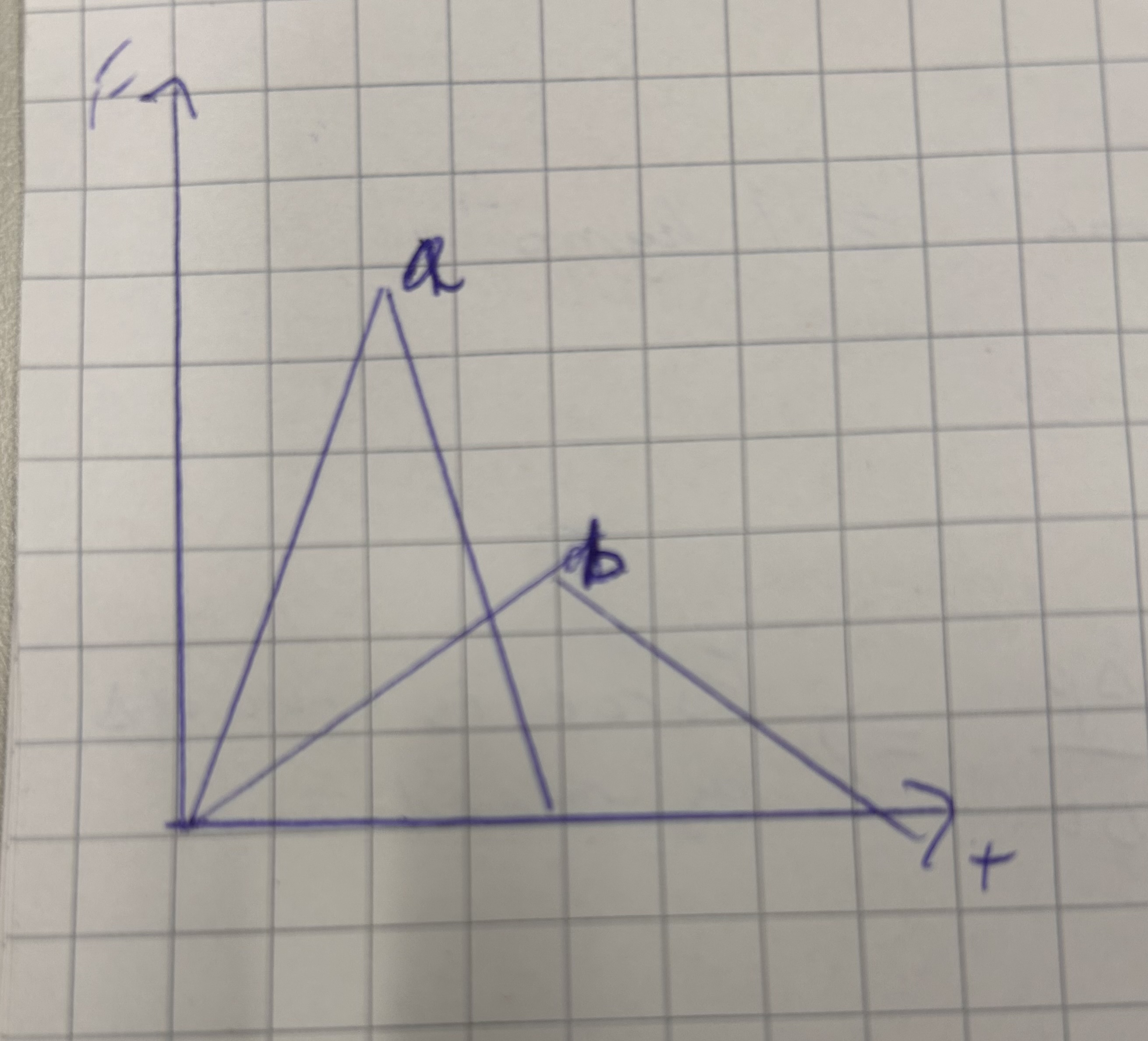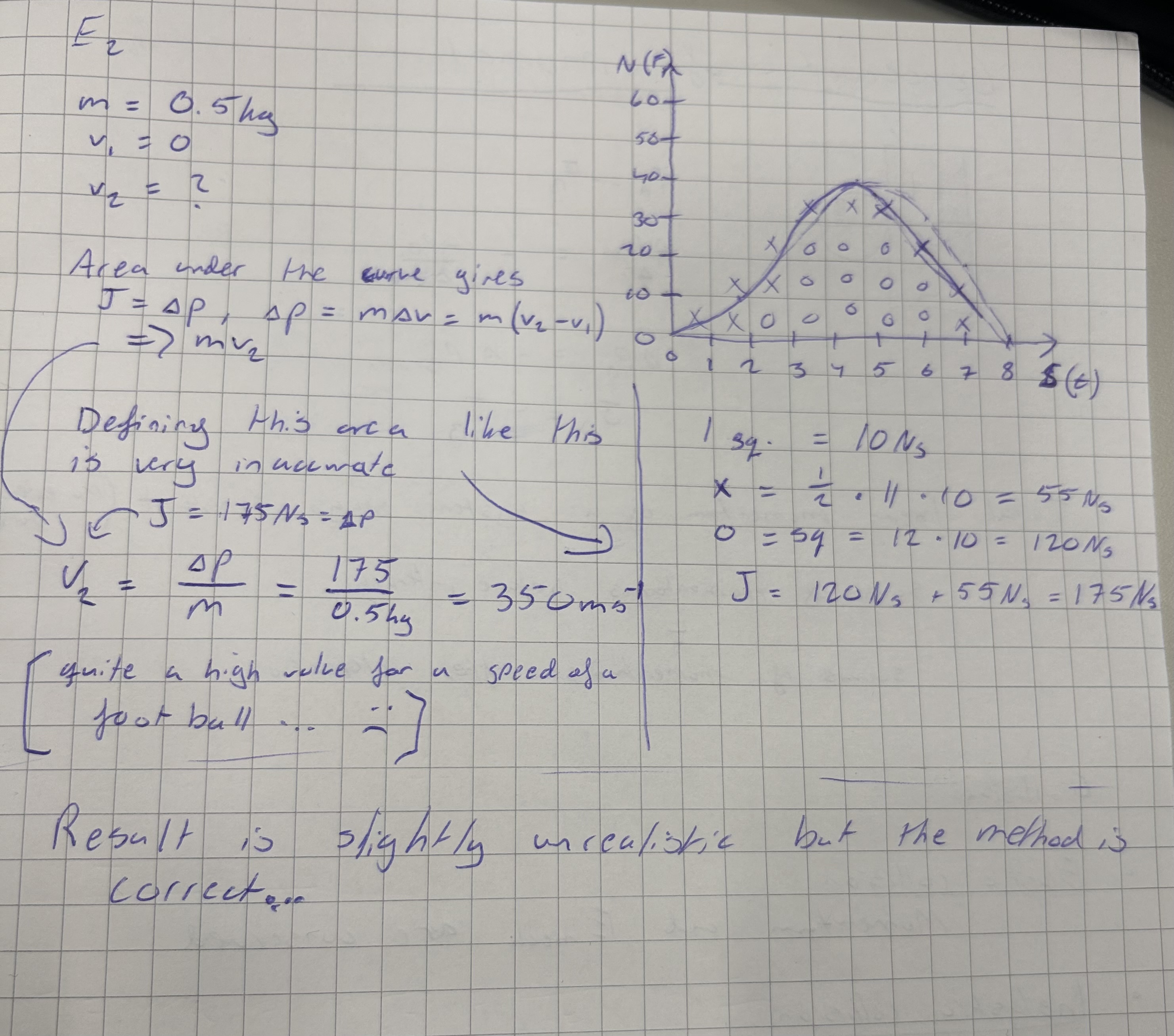Physics T2
1/29
There's no tags or description
Looks like no tags are added yet.
Name | Mastery | Learn | Test | Matching | Spaced |
|---|
No study sessions yet.
30 Terms
Which factors affect the force
Velocity and mass
How does velocity affect the force
A faster ball out of two balls is more difficult to stop (they both have the same mass)
How does mass affect the force
A heavier ball out of two balls is more difficult to stop (they both have the same velocity)
what is the formula for momentum
p=mv
Unit of momentum
1kgms^{-1}
How would you state Newtons second law in terms of momentum (p)
F=ma=\frac{m\Delta v}{\Delta t}=\frac{\Delta p}{\Delta t} → Force is the rate of change of momentum
Impulse formula
F=\frac{\Delta p}{\Delta t}=\Delta p=F\Delta t (F= avg. force)
J=\Delta p
What kind of situations is impulse used in?
Impulse is used in situations where everything happens very quickly
Unit of impulse
1\operatorname{kg}ms^{-1}
In a F vs t graph what does the area represent
Area under the F vs t graph represents the impulse
What if the shape of the F vs t graphs are triangles
In this case, the area (impulse) is same in both cases (a&b). But the effect is different. The max. force experienced is different.

How to calculate if the line isnt linear but rather a curve.

What does the law of conservation of momentum state?\Sigma
The total momentum of a system stays constant (if no external forces are present)
\Sigma momentum before interaction
=\Sigma momentum after interaction
What are the three different types of collisions
Elastic, Inelastic, Totally inelastic
Elastic collision
Both momentum and mechanical energy are conserved
Inelastic collision
Momentum is conserved but mechanical energy isn’t.
Most collisions are inelastic.
Totally inelastic collision
Objects stick together.
Momentum is conserved but mechanical energy isn’t.
How can you state kinetic energy in terms of momentum?
Ek=\frac12mv^2=\frac12\frac{mv^2m}{m}=\frac12\frac{m^2v^2}{m}=\frac12\frac{\left(mv\right)^2}{m}=\frac{p^2}{2m}
Ek=\frac{p^2}{2m}
How to calculate the attractive force, F, between two objects? (Newtons Law of Universal Gravitation)
F=G\cdot\frac{m1m2}{r^2}
how can the strength of a gravitational field be described?
Could be described with field lines. The greater the gravitational field the more field lines.
How to calculate gravitational field strength
g=G\cdot\frac{m1m2}{r^2}\cdot m1^{-1}\Rightarrow G\cdot\frac{m2}{r^2}
What is the Keplers first law?
All planets move in elliptical orbits with the sun at one focus
Kepler’s second law
The time law of areas, a line that connects a planet to the Sun sweep south equal areas in equal times.
Kepler’s third law
The law of periods
